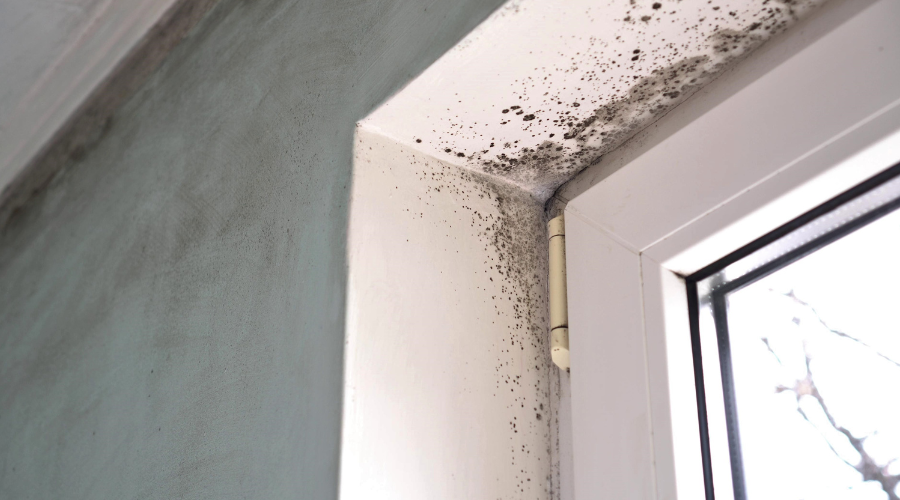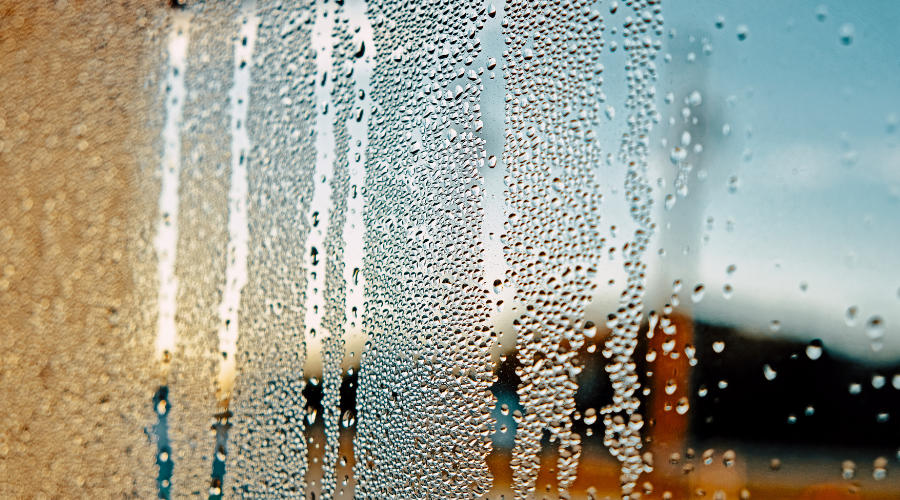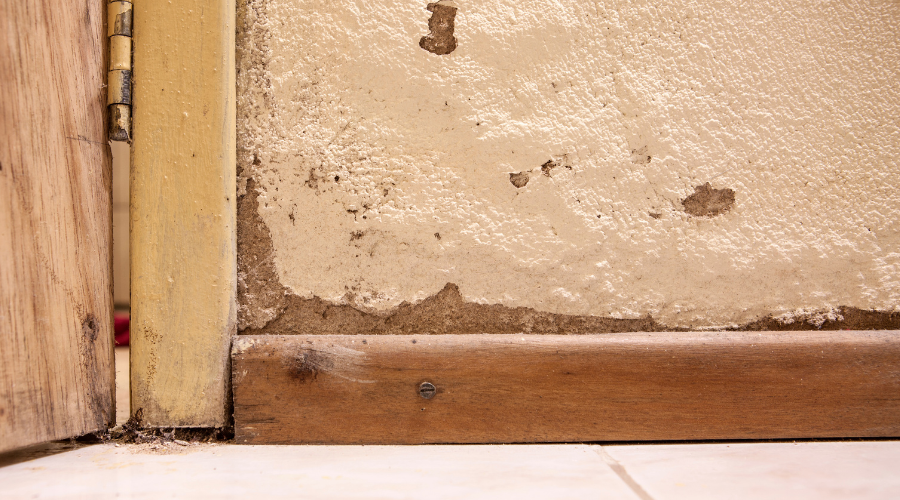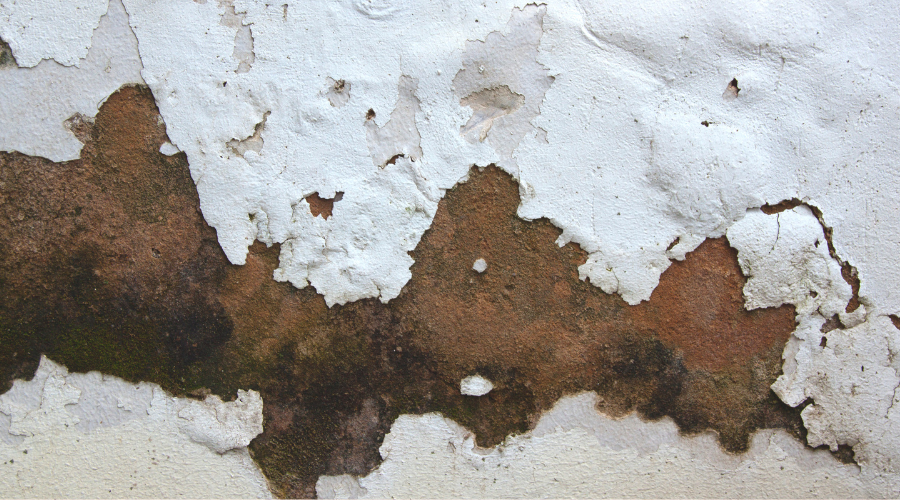Mould in the home
Mould is occasionally an issue found, typically in older homes, caused by excess water in the property – usually as a result of damp or due to excess condensation. Mould, if left untreated, can be a major health hazard. While it’s not unusual to have some mould in your home – often in your bathroom or around your windows – it’s important to make sure this reduced and not caused by a more serious issue.
As your landlord, we have responsibility to assess any damp and mould that is found in our homes. We’ll work with you to agree the action that needs to be taken to resolve the problems.
If you spot mould in your home, first it’s important to identify the potential cause. On this page, we’ll explain everything you need to know – exactly what is mould, and the difference between mould caused by condensation and mould caused by rising or penetrating damp. We’ll also share how you can report any mould issues in your home.
Introducing Awaab’s Law
Your safety and wellbeing at home is our top priority.
That’s why we want to keep you updated on our plans ahead of the introduction of Awaab’s Law – a new law that is changing how social landlords like LHP respond to serious health hazards. We’ve put together a short video with some helpful information – or you can read below for more details.
What is Awaab’s Law?
Awaab’s Law is named in memory of Awaab Ishak, a two-year-old boy who died in 2020 due to exposure to mould in his family’s home in Rochdale, Greater Manchester.
His death was a tragic reminder of the importance of acting quickly when problems are found in people’s homes.
The government has introduced Awaab’s Law to make sure this never happens again.
What does this mean for you and for LHP?
Awaab’s Law gives you stronger rights and greater protection. If you report a serious health hazard in your home, we have a legal duty to respond within a set time. This means faster response times and more accountability from us.
Next year, the rules will change again so that there are new timeframes for a wider range of hazards, and we’ll keep you informed about what they are.
For damp and mould issues that are significant but not an emergency, we must:
- Investigate within 10 working days of the report
- Provide a written update within three working days of finishing the investigation
- Complete non-emergency repairs within five working days of that update. If steps cannot be taken to bring work within 5 working days, this must be done as soon as possible and work must be started within 12 weeks.
- Satisfactory complete works in a reasonable timeframe.
- Keep the customer updates throughout the process and provide information on how to keep safe.
How will this affect you?
You don’t need to do anything differently. We already have our own guidelines in place to make sure we respond to emergency issues within 24 hours.
Plus, we’re taking steps to improve how we handle reports of damp, mould, and other health hazards. This includes better training for our teams, more inspections, and improved communication with you.
Just continue to report issues as soon as you spot them and we’ll take care of the rest.
To report issues, please contact our Customer Service Team by calling 0345 604 1472 or emailing info@lincolnshirehp.com.
Working together
Awaab’s Law will help us to make homes safer and act faster, but we still need you to report issues as soon as they appear.
If you notice signs of damp, mould, or any other concern in your home, please let us know straight away. The sooner we know, the sooner we can take care of it.
Together, we can make sure every home is safe, healthy, and a place you can be proud to live in.
What is Mould?
Mould is a natural compound that develops in damp conditions and will only grown on wet or damp surfaces. If moisture accumulates mould growth will often occur on indoor surfaces. Many types of mould exist, and they all have the potential to cause health problems in people who are sensitive or allergic to mould spores.
Health effects of mould exposure include:
- Blocked or runny nose
- Irritation of eyes and skin
- For people with asthma, inhaling mould spores could trigger an attack
It is important to note that most people will not experience any health problems from coming in to contact with mould.

Condensation and Mould
Condensation occurs when moisture held in warm air (high humidity) comes in to contact with a cold surface. This condenses and produces water droplets. You may see this on your windows or walls, especially in kitchens, bathrooms and bedrooms. You’ll often see it more during the winter, when the windows are closed and the warm, moist air has nowhere to escape to.
Condensation is also caused by:
- Lack of ventilation – if fans and trickle vents aren’t working or not used this can increase humidity. When you cook or take a bath or shower, humidity usually rises. If an extractor fan isn’t working, this moisture has nowhere to go.
- Inadequate insulation in lofts or walls that can cause cold spots, leading to areas where damp is more likely to form.
- Inadequate heating – if your boiler is too small, or you’re not using your radiators or heating much, this can cause condensation.
- Leaking pipes – any water leaking from pipes will evaporate and escape to the air, again, causing condensation.
How to reduce condensation
When you have warm, moist air trapped in your home, it needs somewhere to go. You can help this by:
- Opening a window
- Turning on extractor fans
- Wiping up any condensation that condensation with a cloth or sponge (e.g. water drops on your windows)
It is very important to strike a balance between warmth and ventilation. By opening windows or turning on extractor fans, it may appear that you are losing heat, but what you are actually doing is allowing warm moisture-laden air to escape and permitting cool dry air to enter your home. Dry cool air is actually cheaper to heat than warm moist air! So this actually saves you money, as well as resulting in a healthier living environment.
Energy Crisis
We recognise that the current financial climate is difficult for some of our customers, especially in relation to energy costs. Turning on the heating or opening windows isn’t an option for everyone. We’re here to support you – we have a trained and dedicated Money Support Team who can advise on all aspects of customers personal finances, including benefits, grants and schemes.

Rising Damp
Moisture from the ground can rise through the structure of your home, causing rising damp. This is usually caused by a building defect such as a breakdown of a damp proof course or floor membrane.
Signs to look out for are:
- A ‘tide mark’ on perimeters of the walls where the damp proof course has failed
- Wet patches on walls
- Flaking or bubbling plaster
- Rotting skirting boards

Penetrating Damp (including internal leaks)
When water penetrates the external structure of your home or where internal leaks are causing damp, rot and damage, is known as penetrating damp.
This can be caused by:
- Defective structure of the building allowing water ingress
- Defective roof coverings and external rendering
- Blocked gutters and drainpipes
- Internal floods caused by burst pipes

How to avoid damp and mould in your home
We’ve put together a short video with some handy tips on how to avoid damp and mould in your home.
Report Now
If you have any concerns about damp, mould and condensation in your home, please contact our Customer Service Centre on 0345 604 1472 (between 8.30am and 5.30pm Monday-Friday) or email our team.
Call us about damp (between 8.30am-5.30pm Monday-Friday) Email us about damp